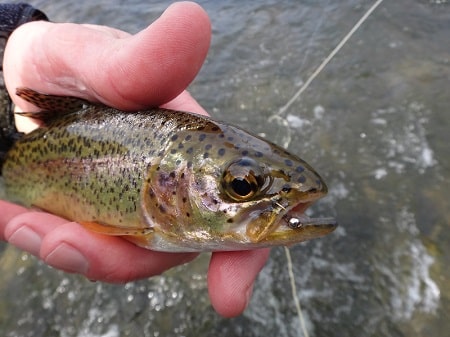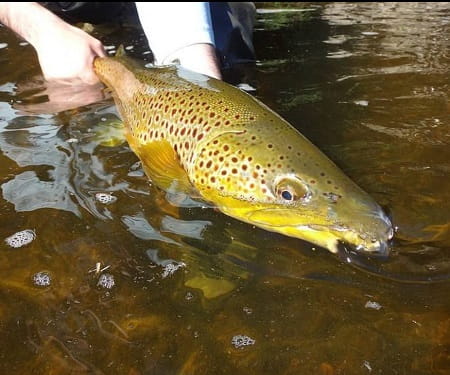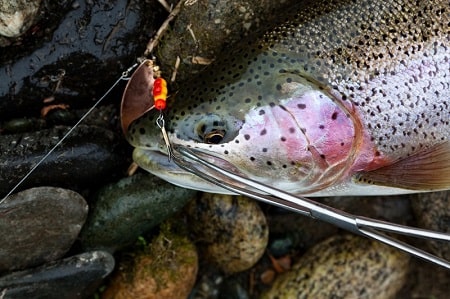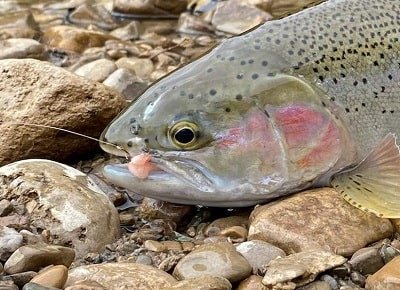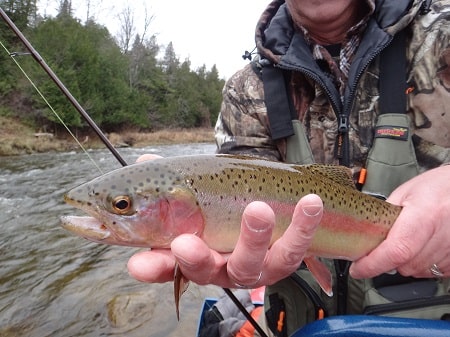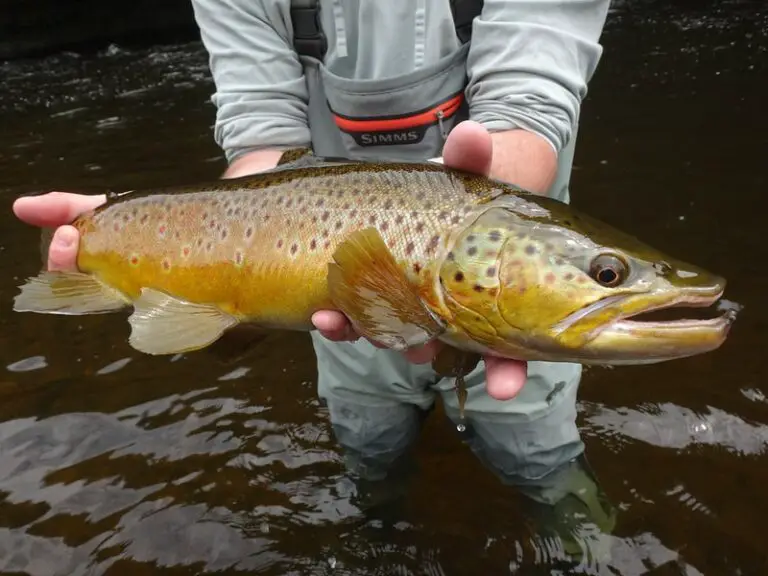Brown Trout Fishing: Tactics And Tips From Experts
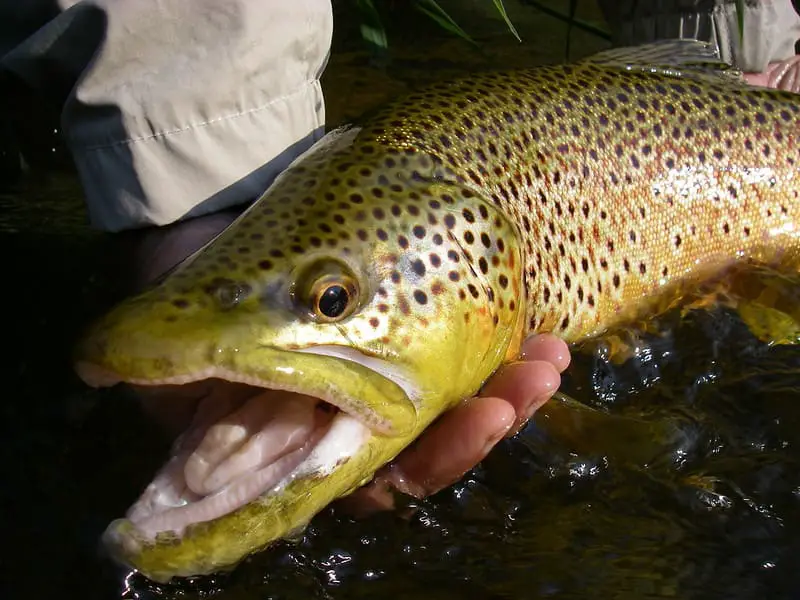
If you’re new to brown trout fishing or already have some experience, this article will provide the tips, tactics, and methods used by expert fishing guides that fish for brown trout in rivers, lakes, reservoirs, and ponds.
As a seasoned fishing guide for over two decades with a love for wild brown trout fishing, I’ve fished brown trout in just about every condition imaginable, and I’ve used just about every bait, and all the most common methods.
Brown trout fishing is most effective using methods like float fishing, bottom fishing, fly fishing, and lure fishing. Brown trout prefer certain types of bait, like fish eggs, worms, nymphs, and minnows. Lures like spoons, spinners, and crankbait can also be excellent for catching brown trout.
Using the same methods and baits that expert trout fishing guides use can improve your brown trout fishing success regardless of your skill level.
About Brown Trout
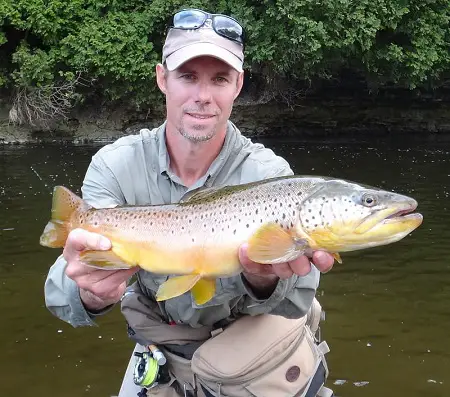
The brown trout, scientifically known as Salmo trutta, is a favorite trout species and a prized freshwater gamefish all around the world. Also known simply as “browns,” they inhabit clear, cold streams and are easily recognizable by the distinctive black spots and tan color along their body.
Unlike some of their relatives, most brown trout prefer to reside in freshwater throughout their entire lives, making them non-migratory. Although there are some migratory brown trout species, this article is about non-migratory brown trout commonly found in rivers and lakes.
Brown Trout Appearance
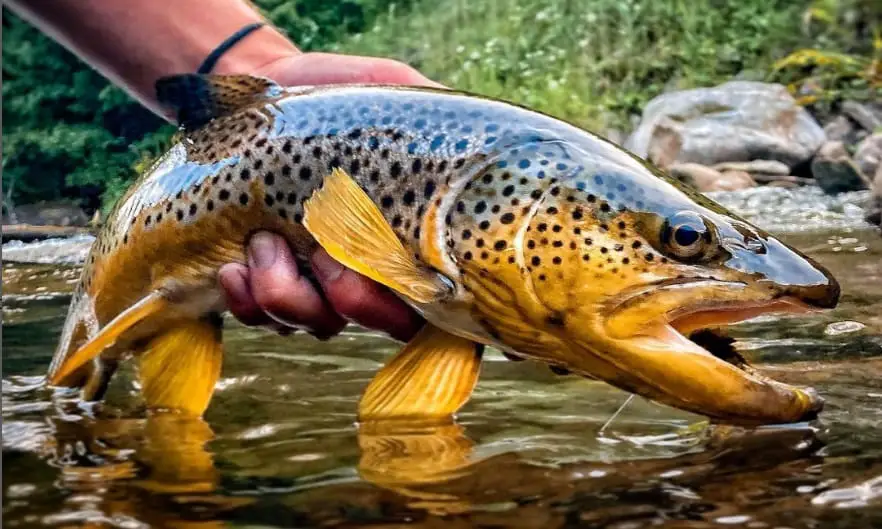
The brown trout’s distinguishing features include a tan body, often with yellow or orange hues, and a white belly. Brown trout will often have red or orange spots combined with black spots on both sides of their bodies, and on the cheeks and gill plates. Their upper bodies are usually always covered with small black spots, making them easy to identify.
However, it’s worth noting that the appearance of brown trout can vary from different areas and different water bodies, which can be a result of their environment and food sources.
I have caught some brown trout with very few black spots, some with lots of black spots, some with and without red or orange spots.
Brown Trout Range
Originally native to Europe and Asia, brown trout are now widespread across the USA and Canada, thanks to extensive stocking programs. These captivating fish have also found their way to other regions worldwide, including the UK, South America, New Zealand, and Australia.
Habitat and Diet of Brown Trout
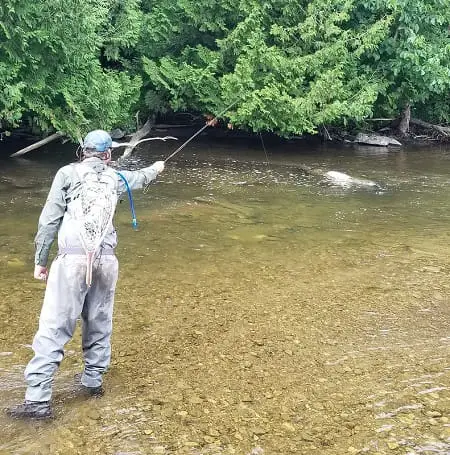
Brown trout thrive in cold, clear waters with ample oxygen and a rich supply of food, such as aquatic insects and other fish.
They can be found in various water bodies, including streams, rivers, lakes, and ponds.
Browns will eat just about anything small enough for them to put in their mouths.
Brown Trout Spawning Times
Brown trout typically spawn in the fall just before winter. The timing varies depending on the region; in North America, they generally spawn between October and December.
Brown Trout Sizes and Record Catches
Brown trout can vary in size, adapting to their surroundings. In small creeks, they may remain smaller, but in larger rivers and lakes, they can grow to impressive lengths, even reaching over 40 inches. The average brown trout is 12 to 16 inches and in most areas, a large brown trout would be over 20 inches with trophy size being 25 inches and bigger.
Some notable record catches include the current world record 44.5-pound brown trout from New Zealand.
In North America, the current record is a migratory brown trout of 41 pounds caught in Michigan.
Edibility of Brown Trout
Brown trout are heavily stocked due in part to their reputation as one of the tastiest trout varieties. Their delectable flesh can be found on the menus of high-end restaurants and is a popular choice among anglers and food enthusiasts alike.
The Best Time for Brown Trout Fishing
While brown trout can be caught year-round in many areas, spring offers the best opportunities.
After cold winters and fall spawning, brown trout become more active and feed heavily in the spring with the warming water and an abundance of food.
The fall months come in a close second for great fishing for brown trout with angers catching huge brwon trout before and after they spawn.
During the summer heat, fishing might be more challenging, but skilled anglers can still find success.
Understanding how water temperature affects feeding behavior and using expert winter fishing tactics can yield good results in colder regions during winter.
Wild Brown Trout vs. Stocked Brown Trout
Wild and stocked brown trout share similar characteristics but differ in feeding and survival behaviors. Wild browns are more selective in their food choices, they can be very cautious and hard to catch, and they are better hunters, while stocked browns tend to be less cautious and eat almost anything presented to them.
Fishing for Brown Trout
Fishing for brown trout requires some know-how and skill. To increase your chances of success, it’s best to follow the tips and tactics experienced guides and experts employ. Avoid common mistakes and watch your catch rate soar.
Where to Find Brown Trout in Rivers
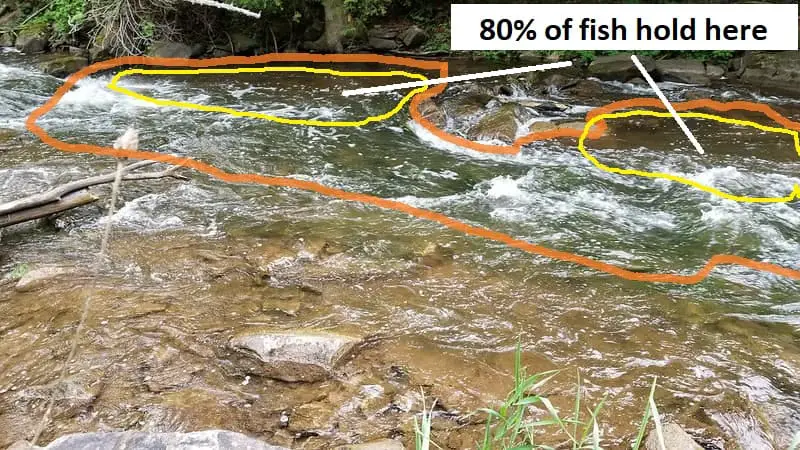
Brown trout prefer sections of the river with currents that provide more oxygen and bring in food. Some preferred brwon trout holding and feeding areas include:
- Deeper Water: Pools, trenches, or holes offer a comfortable habitat for brown trout.
- Fast Riffle Current: Faster riffles bring food to the brown trout and offer shelter from predators, but they only hold in these areas when conditions are right and food is plentiful.
- Pockets: In faster sections of the river, pockets formed by rocks and holes create mini-holding spots where brown trout rest and feed.
- Structure: Logs, rocks, and ledges provide excellent hiding spots for brown trout while they feed.
- Tailouts: Slower, shallower sections at the end of pools or runs attract brown trout that feed on surface insects.
- Head of the Pool: Larger trout, often referred to as the kings and queens, will move to the head of the pool during major bug hatches, claiming the prime feeding spots and chasing away smaller trout.
Where To Find Brown Trout In Lakes, Ponds and Reservoirs
In still waters like lakes, ponds, and reservoirs, brown trout can roam extensively.
Big brown trout can be found in open water, along shorelines, and at various depths.
Productive spots include stream mouths, mid-lake structures like rock piles and humps, points that protrude into open water, and shoreline structures like logs, fallen trees, rocks, and weeds.
Brown trout in these environments seek out areas with abundant food, preferred water temperatures, and sufficient oxygen. Brown trout are constantly moving in search of comfortable water conditions and food. Ideally, water temperatures in the 50s and low 60s are preferred except after ice-out when crown trout will move shallow in search of warmer water and food.
Brown trout in lakes are usually stocked and can be found within 300 yards from shore but this can vary during seasonal transitions. In winter, the best fishing spots are typically in 20-40 ft of water, especially near sunken timber, rock piles, and boulders.
Brown Trout Rod & Reel Setup
When it comes to gearing up for brown trout fishing and the line you use, it’s essential to be mindful of their sharp eyesight and acute awareness of their surroundings.
For smaller streams and lakes, opting for 3 to 6lb test monofilament is advisable to avoid spooking wary brown trout.
For slow moving presentations such as drifting a bait, go with 3 or 4 pound leader made of fluorocarbon.
However, if you’re venturing into larger bodies of water where bigger browns thrive, it’s best to step up to a mainline of 8-pound test monofilament but when fishing with lures, a 10 to 12-pound fluorocarbon leader is best.
Trout enthusiasts often invest in specialized rods and reels, but for beginners, a simple multi-species rod and reel will suffice. A light, medium-light, or medium 7-foot rod is a good all-purpose spinning rod.
This versatile setup allows you to target both small and large brown trout, as well as other trout species like rainbow trout.
Choose a reel between 2000 and 3000 size paired with a medium to medium-light rod for optimal performance.
Hooks For Brown Trout Fishing
Hooks are small and an often overlooked part of the bait rig, but let me tell you from experience that top guides are meticulous about the hooks that they use.
Some hooks penetrate and hook the brown trout better, and they also hold onto the trout better. I recommend short shank wide gape hooks like the Raven Specimen hook or the Gamakastu Octopus hook.
Hook sizes from 8 to 12 are best, and I highly recommend you choose the hook size based on the size of your bait.
It’s also very important to learn how to hook your bait on your hook for maximum success. A properly hooked bait can double or triple the amount of brown trout you can catch.
I have a series on fishing with baits and how to hook them and use them more effectively.
Best Methods For Brown Trout Fishing
Several effective methods are used to catch brown trout, and some of the top ones include these ones listed below.
Float Fishing For Brown Trout
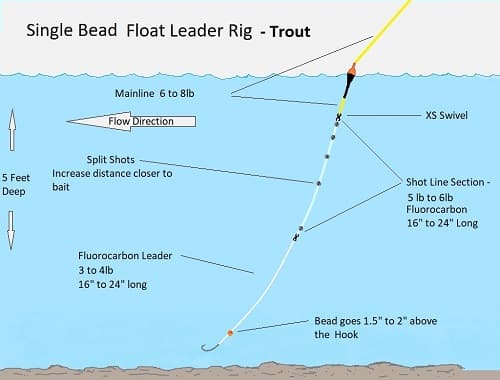
Float Fishing and Bobber Fishing: In rivers over 3 feet deep, float fishing is highly effective method for catching brown trout of all sizes.
Drifting a bait below a float requires some skill, but when done correctly, it can lead to fantastic results.
It is essential to use a float that is specifically designed for river fishing and follow the four key fundamentals of float fishing. Anglers that DO NOT follow these fundamentals and instead just cast, drift, and watch their float will catch ten times less brown trout.
Float fishing in lakes and rivers is also effective and the use of slip floats and weight is required.
Drift Fishing For Brown Trout
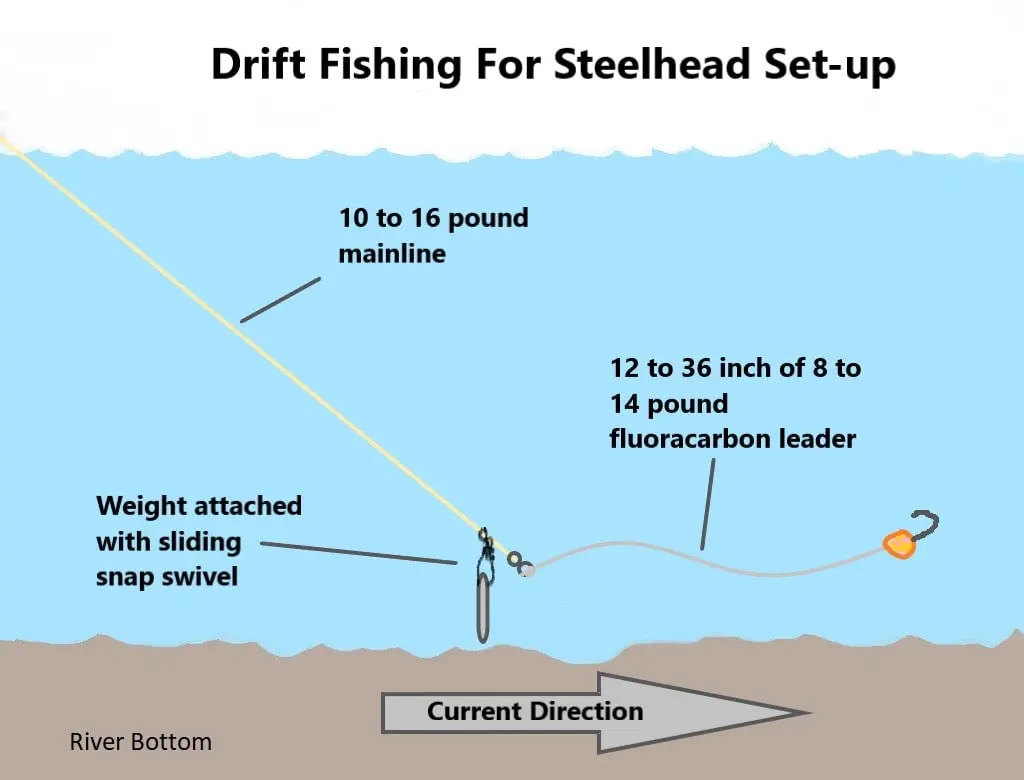
Drift Fishing: Drifting a bait and weight without a bobber is common in larger, faster, and deeper rivers. The drift fishing method allows the angler to cast for and fish far.
It excels in deeper and faster water, but new anglers may struggle to detect bites which is why float fishing is more common.
Having the proper setup and line will improve your success. See Drift Fishing.
Bottom Bouncing For Brown Trout
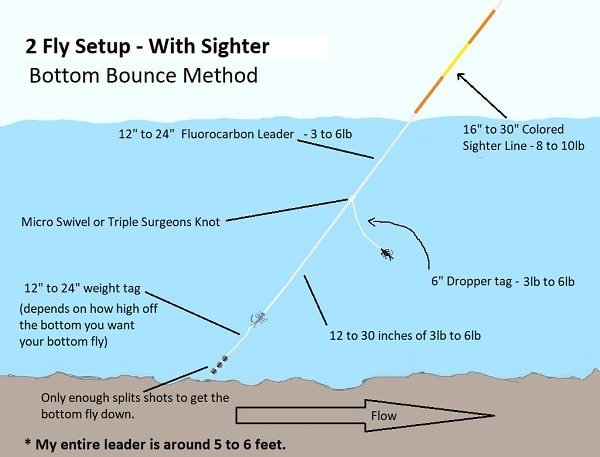
Bottom Bouncing is similar to drift fishing but is better suited for shallower and smaller river sections. Bottom bouncing excels in pocket water and streams less than 3 feet deep.
Bottom bouncing is my preferred spin fishing method in this type of water.
See my Bottom Bouncing article.
Fly Fishing For Browns
Fly fishing is a favorite method for brown trout fishing on rivers and small streams. It’s also my favorite method for fishing brown trout. It can be challenging in some water and the most effective and easiest method at times.
Imitating drifting insects on the surface is unique to fly fishing and this type of surface fishing can’t be beat but other methods.
A 4-weight to 5-weight fly rod with a floating fly line is suitable for most rivers.
See my article, Fly Fishing For Trout.
Bottom Fishing For Brown Trout
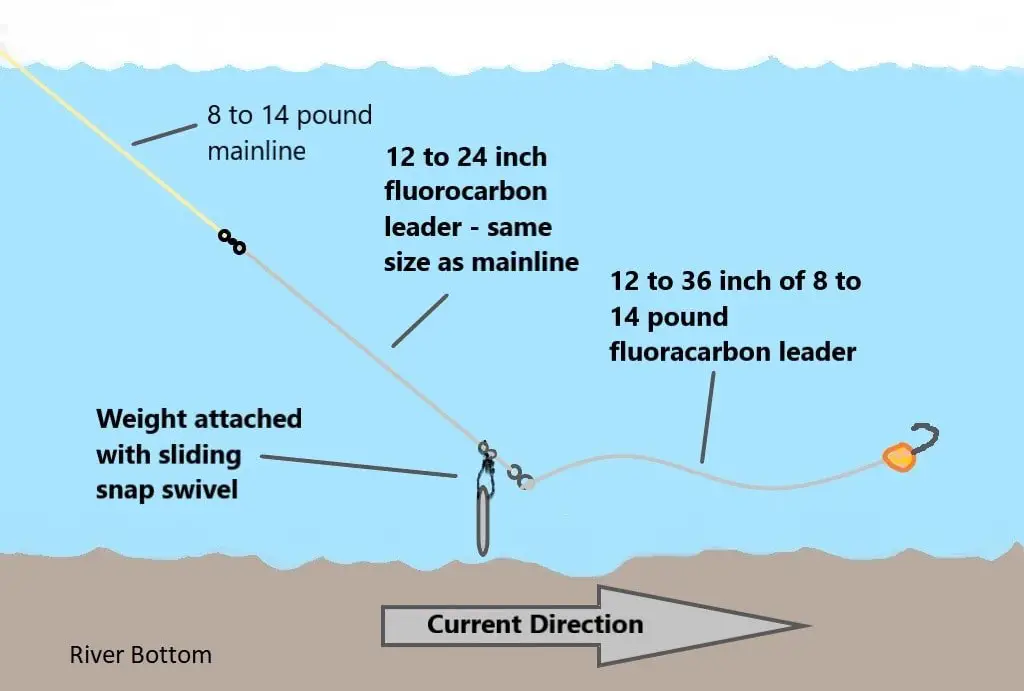
Bottom Fishing, also known as Still Fishing, is excellent when the trout are low in the water column and are deep. Casting bait on a weighted rig and letting it rest on the bottom can be effective in lakes, ponds, and some rivers with high trout populations.
Best Baits for Brown Trout Fishing
Selecting the right baits can make a world of difference in your brown trout fishing success. Stick to highly effective baits that have proven track records, such as:
- Small to midsized earthworms
- Fish eggs
- Live bait like maggots, insects, minnows, crayfish, and leeches
- Artificial or imitation baits like Berkley Powerbait (for specific situations)
- Avoid using low-percentage baits like corn or marshmallows, as they are less likely to attract brown trout.
See the Best Baits For Trout article.
Presenting Live Bait For Brown Trout
When fishing in areas with current, your goal is to cast your bait upstream and allow it to drift downstream naturally.
As the split shot hits the bottom, it’s crucial to lift the rod tip to avoid getting snagged between rocks.
Once you detect bottom, you want to lift he rod high enough to keep the bait 6 to 12 inches off the bottom. Baits above a brown trout head catch 80% more trout than a bait below thier heads.
Keep the slack out of the line letting the current smoothly carry the bait downstream as natural as possible. Once the bait drifts past your fishing spot, reel it in and repeat the drift.
Achieving a perfect drift may require multiple casts, but it’s essential for a natural presentation that won’t raise suspicion from brown trout.
Using a bobber to drift with the current or the wind on a lake is a more straightforward approach, but the wrong-sized bobber or a twitching or dragging bobber can potentially spook the trout.
Trout fishing often involves balancing different factors and making trade-offs to achieve success.
By employing these live bait techniques, you increase your chances of enticing brown trout to strike while maintaining a more natural presentation in the water.
Bait Restrictions For Brown Trout Waters
Before you purchase your baits and head out for brown trout fishing, it’s crucial to familiarize yourself with the specific regulations in your state.
Different bodies of water may have their own unique rules and restrictions on baits. For instance, in western states, live bait might be prohibited in many bodies of water, while it’s often allowed in the Midwest and East Coast.
Moreover, certain bodies of water may enforce selective gear rules, which could restrict the use of barbed hooks, treble hooks, or multiple hooks.
Keep in mind that regulations can vary significantly from one area to another, even within a single stream or river.
It’s essential to pay attention to signs indicating terms like “Delayed Harvest,” “Artificial Lures Only,” and “Stocked Trout Waters,” as they may appear along the same stream or river with different regulations in different sections.
Lure Fishing for Brown Trout
Lure fishing with small spinners, spoons, jigs, and crankbaits is a popular and productive method for brown trout fishing.
Lakes, ponds, and reservoirs are ideal for cating lures for brown trout since you can cover a large area and explore various depths faster with lures.
See Lure Fishing For Trout article.
Best Lures for Brown Trout Fishing
Having a diverse selection of lures can be advantageous, as brown trout can be unpredictable in their preferences. Some favorite brown trout lures include:
- Spinners: Master the use of spinners for improved catch rates.
- Spoons: When used correctly, spoons can be highly effective for catching brown trout.
- Crankbaits: A go-to choice for targeting large brown trout, but success may vary depending on the specific crankbait used.
- Jigs: Often overlooked, jigs can be a powerful lure for both big and small brown trout.
Brown Trout Fishing Regulations
Before heading out to fish, it’s crucial to check your local fishing regulations regarding brown trout fishing.
Rules and regulations can vary widely depending on the area and may change yearly. Ensure you fish legally and responsibly, respecting the specific regulations of the rivers and lakes you plan to visit.
Fishing For Brown Trout Summary
In this comprehensive guide to brown trout fishing, we explored the various aspects of this exciting pursuit.
Brown trout, with their striking appearance and adaptability, can be found in a wide range of water bodies across the USA, Canada, and beyond. We discussed the best times for fishing, the differences between wild and stocked brown trout, and their preferred habitats in rivers and lakes.
Moreover, we delved into the most effective fishing methods, such as float fishing, drift fishing, fly fishing, and lure fishing, with a focus on selecting the best baits and lures for success.
Always remember to respect local fishing regulations and continue learning and sharing your experiences to become a skilled brown trout angler. Happy fishing!
Brown Trout Fishing Q&A
The world of brown trout fishing is ever-evolving, and I’ll be updating this article periodically to provide you with fresh information.
Feel free to ask questions, share your tips, tricks, and advice on brown trout fishing in the comments section below. Together, we can continue to learn and improve our skills in pursuit of these majestic fish.
Tight Lines,
Graham

